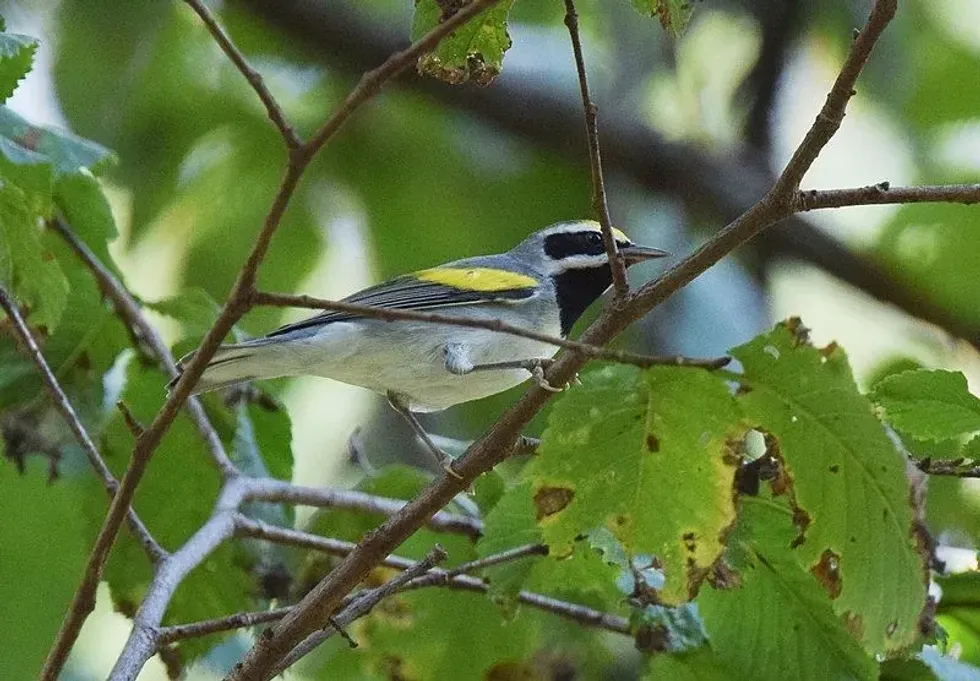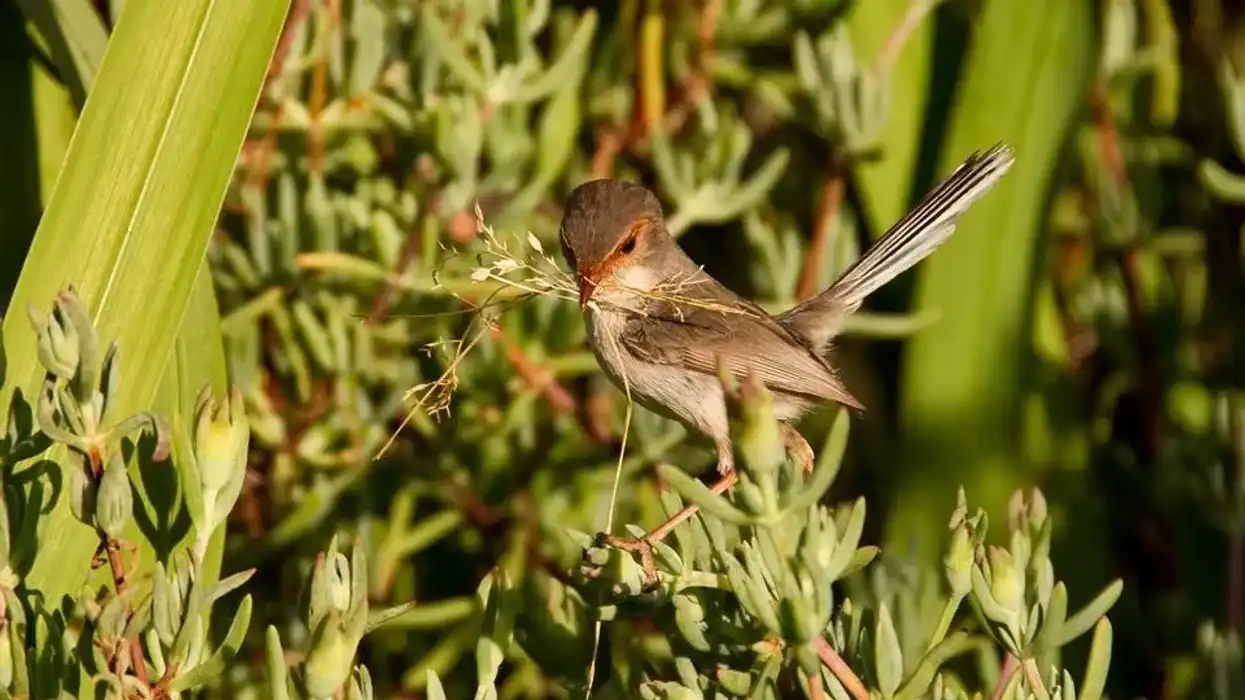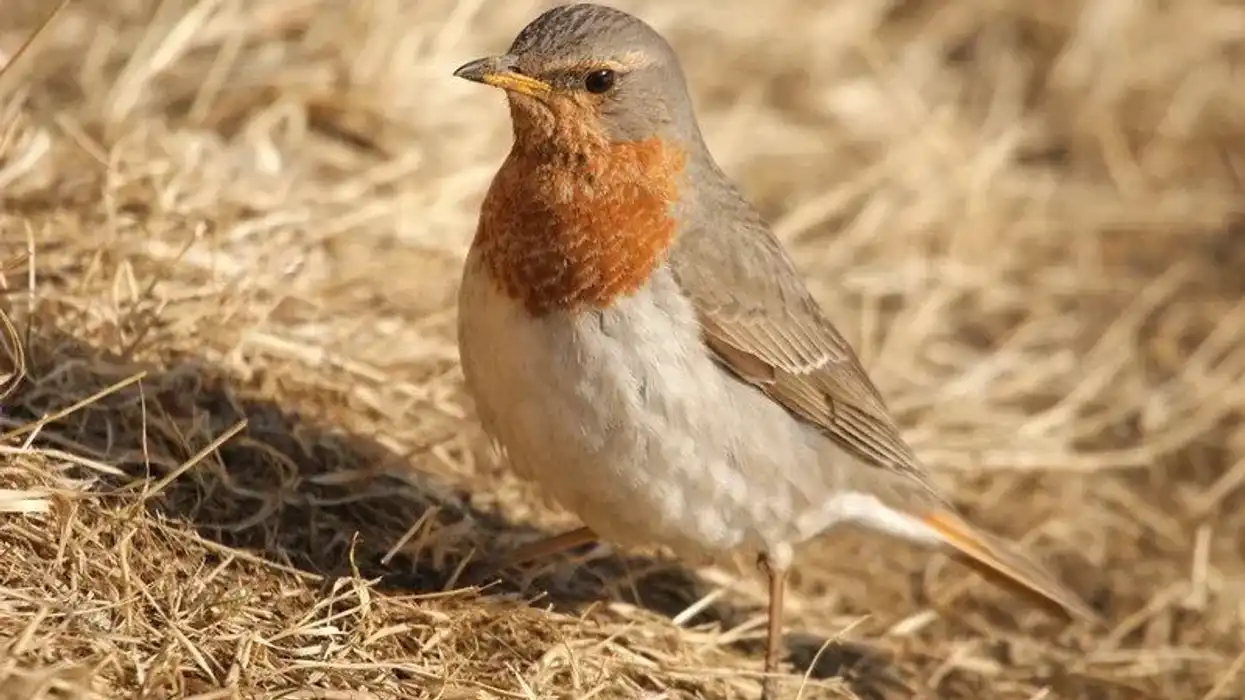The golden-winged warbler (Vermivora chrysoptera) is one of the most beautiful North American songbird species. It is a really small bird with gray feathers and a yellow crown with white stripes across its face.
Male and female birds of this species are generally similar in appearance, with females being slightly paler. They are primarily found in the Appalachian Mountains and the Great Lakes.
For wintering grounds, they tend to migrate towards South America and parts of Mexico. Over the years, these breeding and wintering ranges have come under threat and have been shrinking.
In fact, this species has faced one of the steepest declines amongst other songbirds. Its closely related blue-winged warbler also shares the same habitats which has led to their hybridization.
One of the bird conservation plans to save the dwindling population of these North American birds is the Golden-winged Warbler Working Group, bringing together several known universities such as the Cornell Lab of Ornithology.
Read on to learn more about this conservation plan along with other interesting facts. If you enjoyed reading about this bird, do consider reading our articles on yellow warbler and palm warbler.
Golden-Winged Warbler Interesting Facts
What type of animal is a golden-winged warbler?
A goldern-winged warbler is a species of bird. It belongs to the order Passeriformes and the family Parulidae.
What class of animal does a golden-winged warbler belong to?
A golden-winged warbler is of the class Aves of the Animalia kingdom.
How many golden-winged warblers are there in the world?
According to the IUCN Red List, the golden-winged warbler population is decreasing across its breeding range. At present, the population is estimated to be around 410,000.
The primary reason for their decline is the shrinking of their migration and wintering habitats. Expansion of agriculture and aquaculture grounds has contributed to its habitat loss. A second reason for the threat to their population is hybridization with blue-winged warblers.
Where does a golden-winged warbler live?
The golden-winged warbler's breeding habitat is in North America. Specifically, this range covers the Appalachian mountains and the Great Lakes. They migrate towards South America and parts of Mexico in search of wintering grounds.
What is a golden-winged warbler habitat?
A golden-winged warbler's habitat preference is shrubby habitats, open woodlands, wetlands, and open land with scattered vegetation and shrubs. These form excellent breeding grounds as their nests are built on grounds and hidden from other wildlife.
This bird population is also found in suburban lands such as abandoned fields, clearings, and mines. Young golden-winged warblers are known to fledge towards mature forests.
Early 20th century settlers created a habitat for golden-winged birds as they cleared land for agricultural purposes. Over the years, as these habitats were replanted, they were no longer tenable for warblers.
Who does golden-winged warbler live with?
As male of this species is very aggressive about its habitat, . It it shares its nesting land with its monogamous female mate.
They tend to avoid other pairs of the same species. However, they do share their habitat with the closely related blue-winged warbler. This often leads to hybridization and is also cited as a probable cause for their depleting habitats.
How long does a golden-winged warbler live?
They may live up to eight years, but this is based on only one assessment. More studies are required for a precise estimate of the longevity of this population.
How do they reproduce?
The breeding habitat of warblers is generally near the clearing on the ground and forests. The female is known to select the nesting grounds.
Male and female golden-winged warblers breed once a year. These birds are monogamous in nature. Its breeding season occurs during the months of May to June.
Female golden-winged species tend to lay three to six eggs. These bird eggs are incubated for a period of 10 to 12 10-12 days in a nest, after which the young birds are born. These young ones are helpless and depend on their parents.
The young fledge after one month but are still fed by their parents. They are known to reach the age of sexual maturity after 10 to 12 months.
What is their conservation status?
According to the IUCN Red List, the conservation status of the golden-winged warblers is Near Threatened. The population trend is decreasing because of a continuing decline of mature individuals.
The main reason for the decline of golden-winged warblers has been caused by the loss of habitat to blue-winged warblers. An increase in agricultural and aquacultural coverage is also adding stress to their ecosystems and affecting their conservation status.
Golden-Winged Warbler Fun Facts
How does a Golden-winged Warbler look like?
They are relatively small birds with an average length of 5.1 in (13 cm) 4.6 in (11.6 cm) and a golden wing warbler has a wingspan range of 7.8 in (20 cm). A golden-winged warbler looks like a small bird with gray and golden-colored wing feathers.
A prominent, darker bill can be seen on golden-wing males. Males tend to have a golden color on their outer wings and head, whereas females have a green-yellow-colored crown. Female golden-winged warblers also have a gray bib and somewhat lighter patches around their eyes.
Male golden-winged warblers often look different during the breeding season. They harbor a relatively flashy plumage.
How cute are they?
This species of songbird is extremely cute because of its small size and colorful feathers.
How do they communicate?
These birds have two main kinds of birdcalls. The first one is often described as a high-pitched note followed by lower three to six notes.
This acts as a signal for females during the breeding season. The other call is three to five notes, relatively lower in pitch, heard during sunrise. These birds have also been found making use of the call to communicate a defensive stance during a fight or a territorial attack.
How big is a golden-winged warbler?
Among the many species of warblers, golden-winged is an average-sized bird with 4.6 in (11.6 cm) length a 7.8 in (20 cm) wings. Compared to an American crow, a golden-winged bird is four times smaller.
How fast can a golden-winged warbler fly?
Golden-winged birds are average in terms of flying. They fly a long distance in plain sight during the mating season. Other than that, they nest very secretively and lay near the ground. The habitat for golden-winged birds helps this particular behavior.
How much does a golden-winged warbler weigh?
Golden-winged warblers are small-sized birds and weigh, on average, a mere 0.28–0.35 0.3-0.4 oz (8–10 g).
What are their male and female names of the species?
There are no distinct names for males and females of this bird species.
What would you call a baby golden-winged warbler?
A baby golden-winged warbler is called a 'chick'.
What do they eat?
These birds are insectivorous in nature. They eat moth larvae, caterpillars, spiders, and grubs. They probe these insects in shrubby and forest tree hollows. On the other hand, they are preyed upon by birds such as American crows, blue jays, and eastern chipmunks. They tend to hide in shrubby habitats and use different tactics to protect their young.
Are they dangerous?
Golden-winged warblers of the order Passeriformes and the family Parulidae are known to be aggressive and can be territorial. However, they are not dangerous to humans and rely on insects for food. However, conservation of these birds is required as golden-winged warbler populations are declining.
Would they make a good pet?
No, golden-winged warblers are not kept as pets as they are a part of wildlife.
Did You Know...
To avoid predators, they tend to trick the hunter by approaching the wrong shrub and not the one with their nest. They behave in a similar way when they encounter humans.
The hybridization between the species of blue-winged warblers and golden-winged warblers is a unique phenomenon and the subject of various scientific research.
The Golden-winged Warbler Working Group is one of the conservation strategies laid out by the U.S, including the Cornell Lab of Ornithology. Its aim is to roll out a conservation plan to save the population of this warbler and the depleting range of habitat by 2050.
Why are they called warblers?
The word 'warbler' is used for any small, insectivorous bird that has a warbling song. They are not related taxonomically but only by these characteristics. Golden-winged warblers are classified as such because they have a small size, a similar feeding pattern, and slender bills.
What is the smallest warbler?
The smallest warbler is called Lucy's warbler with a mere weight of 0.23 oz (6.5 g) and an average length of 4.2 in (10.6 cm).
Here at Kidadl, we have carefully created lots of interesting family-friendly animal facts for everyone to discover! Learn more about some other birds, including limpkin or Blackburnian warbler.
You can even occupy yourself at home by drawing one on our birds on barbed wire coloring pages.










